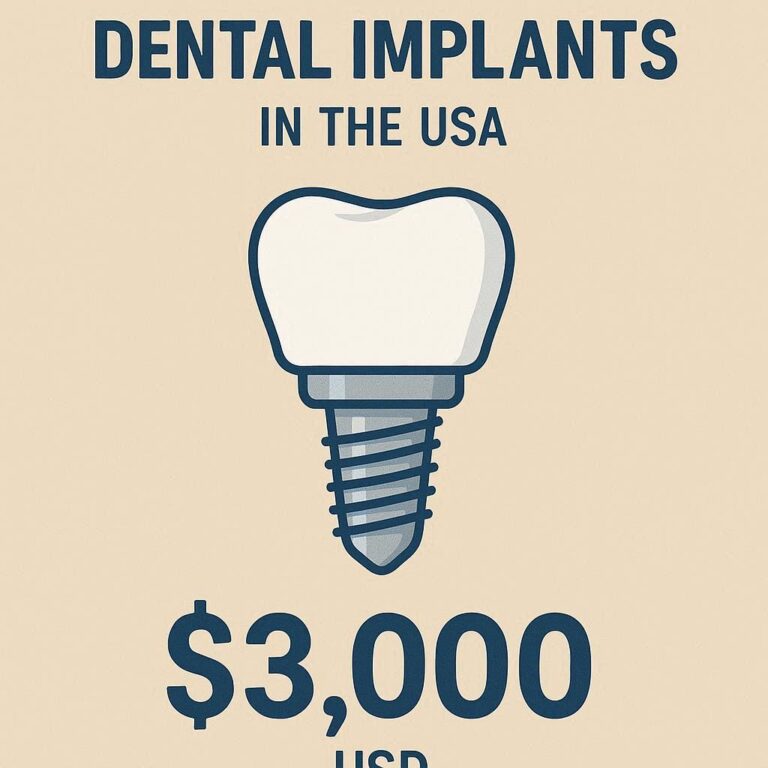Full Jaw Dental Implants Cost
Imagine being able to eat, speak, and smile with confidence again, even after losing all your teeth. Full jaw dental implants have revolutionized restorative dentistry, offering a permanent solution for those who have suffered from tooth loss due to injury, decay, or disease. However, the cost of full jaw dental implants can be a significant concern for many patients.
This comprehensive guide will walk you through everything you need to know about full jaw dental implants, from the types and procedures to the factors influencing their cost. By the end of this article, you’ll have a clear understanding of whether this life-changing treatment is right for you and how to plan for the financial investment.

2. What Are Full Jaw Dental Implants?
Full jaw dental implants, also known as full arch implants, are a restorative dental solution designed to replace an entire arch of missing teeth. Unlike traditional dentures, which sit on the gums, dental implants are surgically placed into the jawbone, providing a stable and permanent foundation for prosthetic teeth.
The procedure involves placing multiple titanium posts into the jawbone, which act as artificial tooth roots. These posts are then topped with a custom-made prosthesis that looks and functions like natural teeth. Full jaw dental implants are an ideal solution for patients who have lost most or all of their teeth due to aging, gum disease, or trauma.
3. Why Choose Full Jaw Dental Implants?
Full jaw dental implants offer numerous advantages over traditional dentures and bridges:
- Permanent Solution: Unlike dentures, which need to be replaced every 5-10 years, dental implants can last a lifetime with proper care.
- Improved Oral Health: Implants prevent bone loss in the jaw, which can occur when teeth are missing.
- Enhanced Functionality: Patients can eat, speak, and smile with confidence, as implants function like natural teeth.
- Aesthetic Appeal: The custom-made prosthesis is designed to match the color, shape, and size of your natural teeth, providing a seamless appearance.
4. Types of Full Jaw Dental Implants
All-on-4 Dental Implants
The All-on-4 technique uses four strategically placed implants to support a full arch of teeth. This method is ideal for patients with limited bone density, as it often eliminates the need for bone grafting.
All-on-6 Dental Implants
Similar to All-on-4, the All-on-6 technique uses six implants for added stability. This option is suitable for patients who require extra support or have a larger jawbone.
Zygomatic Implants
Zygomatic implants are an alternative for patients with severe bone loss. Instead of being placed in the jawbone, these implants are anchored in the cheekbone (zygoma).
Traditional Implants
Traditional full jaw implants involve placing an implant for each missing tooth. While this method offers the most natural feel, it requires sufficient bone density and is more invasive.
5. The Full Jaw Dental Implant Procedure
Initial Consultation and Planning
The process begins with a thorough examination, including X-rays and 3D scans, to assess your oral health and bone density. Your dentist will create a customized treatment plan based on your needs.
Bone Grafting (If Necessary)
If your jawbone lacks the necessary density, a bone graft may be required to provide a stable foundation for the implants.
Implant Placement
During surgery, the titanium posts are placed into the jawbone. This procedure is performed under local anesthesia or sedation to ensure patient comfort.
Healing and Osseointegration
Over the next 3-6 months, the implants fuse with the jawbone in a process called osseointegration. Temporary dentures may be provided during this period.
Attaching the Prosthesis
Once healing is complete, the custom-made prosthesis is securely attached to the implants, completing the restoration.
6. Factors Affecting the Cost of Full Jaw Dental Implants
The cost of full jaw dental implants varies widely depending on several factors:
- Geographic Location: Prices tend to be higher in urban areas and developed countries.
- Dentist’s Expertise: Experienced specialists may charge more for their services.
- Type of Implant and Materials Used: Premium materials and advanced techniques can increase costs.
- Additional Procedures: Bone grafting, sinus lifts, and extractions add to the overall expense.
- Insurance Coverage: Some dental insurance plans may cover a portion of the cost.
7. Average Cost of Full Jaw Dental Implants Worldwide
| Country | Average Cost (USD) |
|---|---|
| United States | 20,000−20,000−50,000 |
| United Kingdom | £15,000 – £30,000 |
| India | 5,000−5,000−10,000 |
| Australia | AUD 25,000 – 45,000 |
8. Financing Options for Full Jaw Dental Implants
- Dental Insurance: Some plans cover a portion of the cost, especially if the procedure is medically necessary.
- Payment Plans: Many clinics offer flexible payment options to make the treatment more affordable.
- Medical Tourism: Traveling to countries with lower dental costs can save you thousands of dollars.
9. Risks and Complications
While full jaw dental implants have a high success rate, potential risks include infection, implant failure, and nerve damage. Choosing an experienced dentist and following aftercare instructions can minimize these risks.
10. Maintenance and Aftercare
Proper care is essential to ensure the longevity of your implants. This includes regular brushing, flossing, and dental check-ups. Avoid smoking and excessive alcohol consumption, as these can compromise the implants.
11. Frequently Asked Questions (FAQs)
Q: How long do full jaw dental implants last?
A: With proper care, they can last a lifetime.
Q: Is the procedure painful?
A: The surgery is performed under anesthesia, so you won’t feel pain during the procedure. Some discomfort may occur during recovery.
Q: Can I get implants if I have bone loss?
A: Yes, bone grafting or zygomatic implants can make the procedure possible.
12. Conclusion
Full jaw dental implants are a life-changing investment in your oral health and quality of life. While the cost can be significant, the benefits of a permanent, natural-looking solution make it worthwhile for many patients. By understanding the procedure, costs, and financing options, you can make an informed decision about whether this treatment is right for you.
13. Additional Resources
- American Academy of Implant Dentistry
- National Institute of Dental and Craniofacial Research
- Dental Implant Cost Guide


